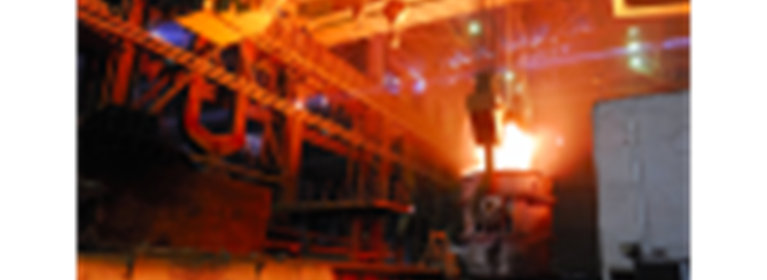
Understanding How Steel Mill Automation Can Improve Safety
By building safety right into the equipment, systems and processes running in the steel mill, you can keep operators safe and better informed of what is going on through every step of the process.
Metals Production | Safety and Training | Crane Systems | Power & Motion Technology | By Christie Lagowski | Aug 26, 2020
From cranes handling thousands of pounds of scrap steel to those transporting liquid metal at very high temperatures, the safety of both workers and equipment is critical in a steel manufacturing plant. By building safety right into the equipment, systems and processes running in the steel mill, you can keep operators safe and better informed of what is going on through every step of the process.
Industrial Automation in a Steel Plant
One way to incorporate safety into a steel manufacturing plant is automation. The convergence of information systems with operational technology, automation in a steel plant can provide precise positioning capabilities, repetitive motion, and built-in safety features to prevent operator injury and equipment damage. Industrial automation in steel plants can also enhance system analytics and diagnostics, helping to simplify maintenance, troubleshooting, and operation.
Another powerful aspect of automated systems is the ability to learn from them. Sophisticated automated systems give you the ability to learn from the technology by logging events that occur, such as starts, stops, faults, etc. This not only allows you to see where there may be areas for improvement in the system, but also gives insight into operator use. Operators, managers and trainers can review the data to identify potential training opportunities to improve safety and efficiency.
Industrial Automation in a Steel Plant: Three Technologies
- No-Fly Zone Technology helps limit the risk of collisions, increasing safety for equipment and personnel. No-fly zone technology allows you to designate areas where crane and hoist operation is limited or entirely restricted. These systems can be simple or complex and are easy to add to new or existing crane controls in your steel manufacturing plant.
- Off-Center Pick, Side Pull, and Snag Prevention Technology can be used to ensure loads are lifted safely during the steel manufacturing process. Swinging loads are not only dangerous for your employees but can damage equipment, resulting in injuries, costly repairs and unscheduled downtime. Off-center pick, side pull and snag prevention technology can detect a load misalignment, side pull, or snagged condition and alerts operators with a visual or audible warning before a dangerous situation occurs. These preventative features give the operator the ability to correct the situation before lifting.
- Automated Diagnostic Technology enables quick and easy programming, maintenance, monitoring, and troubleshooting of your entire system, from the controls to the gearbox. Advanced diagnostics provide critical information, such as positioning and motion, equipment status, and energy use, to keep your system and products functioning effectively and safely. Whether you’re using a laptop, tablet, or human-machine interface (HMI) to help you manage equipment, automated diagnostic technology can give you access to information 24/7 so you can address issues more quickly, ensure safety, and increase uptime.
DOWNLOAD THE STEEL INDUSTRY BROCHURE
Christie Lagowski
Christie Lagowski is a Communications Manager at Columbus McKinnon Corporation. She has 6 years of experience marketing hoists and rigging products as well as crane systems and components. Christie has marketed a variety of industrial products, ranging from lifting solutions to glass technology as well as health and safety products.


 North America - EN
North America - EN
